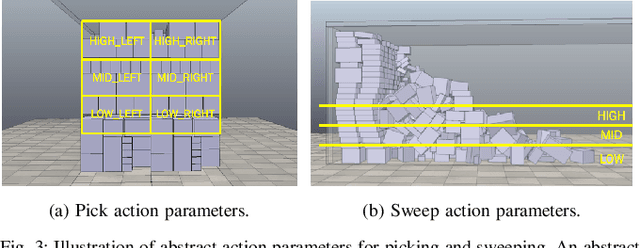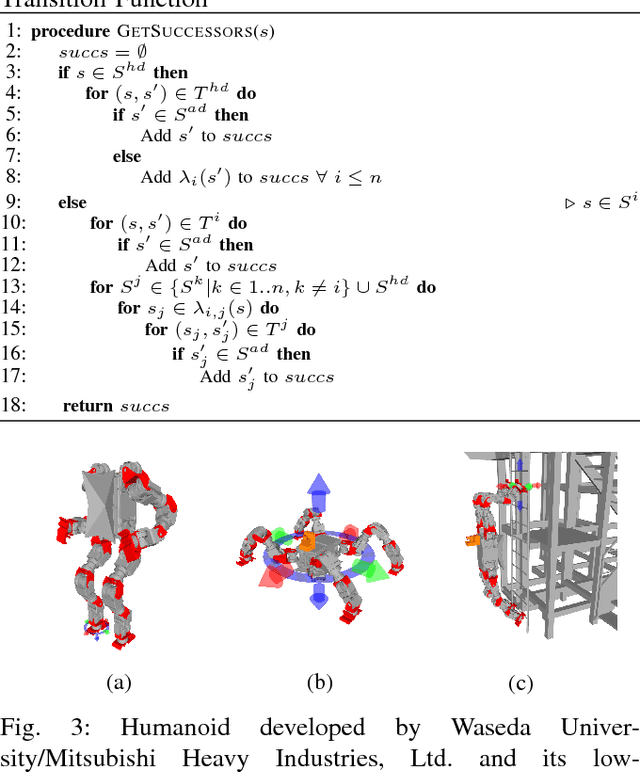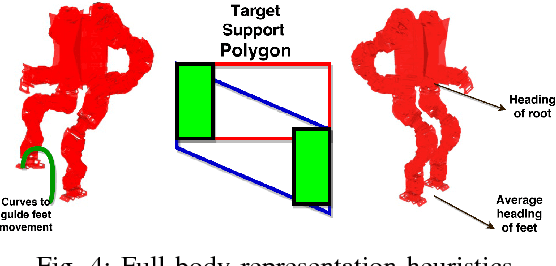Andrew Dornbush
Planning, Learning and Reasoning Framework for Robot Truck Unloading
Oct 21, 2019



Abstract:We consider the task of autonomously unloading boxes from trucks using an industrial manipulator robot. There are multiple challenges that arise: (1) real-time motion planning for a complex robotic system carrying two articulated mechanisms, an arm and a scooper, (2) decision-making in terms of what action to execute next given imperfect information about boxes such as their masses, (3) accounting for the sequential nature of the problem where current actions affect future state of the boxes, and (4) real-time execution that interleaves high-level decision-making with lower level motion planning. In this work, we propose a planning, learning, and reasoning framework to tackle these challenges, and describe its components including motion planning, belief space planning for offline learning, online decision-making based on offline learning, and an execution module to combine decision-making with motion planning. We analyze the performance of the framework on real-world scenarios. In particular, motion planning and execution modules are evaluated in simulation and on a real robot, while offline learning and online decision-making are evaluated in simulated real-world scenarios.
A Single-Planner Approach to Multi-Modal Humanoid Mobility
Jan 30, 2018



Abstract:In this work, we present an approach to planning for humanoid mobility. Humanoid mobility is a challenging problem, as the configuration space for a humanoid robot is intractably large, especially if the robot is capable of performing many types of locomotion. For example, a humanoid robot may be able to perform such tasks as bipedal walking, crawling, and climbing. Our approach is to plan for all these tasks within a single search process. This allows the search to reason about all the capabilities of the robot at any point, and to derive the complete solution such that the plan is guaranteed to be feasible. A key observation is that we often can roughly decompose a mobility task into a sequence of smaller tasks, and focus planning efforts to reason over much smaller search spaces. To this end, we leverage the results of a recently developed framework for planning with adaptive dimensionality, and incorporate the capabilities of available controllers directly into the planning process. The resulting planner can also be run in an interleaved fashion alongside execution so that time spent idle is much reduced.
 Add to Chrome
Add to Chrome Add to Firefox
Add to Firefox Add to Edge
Add to Edge